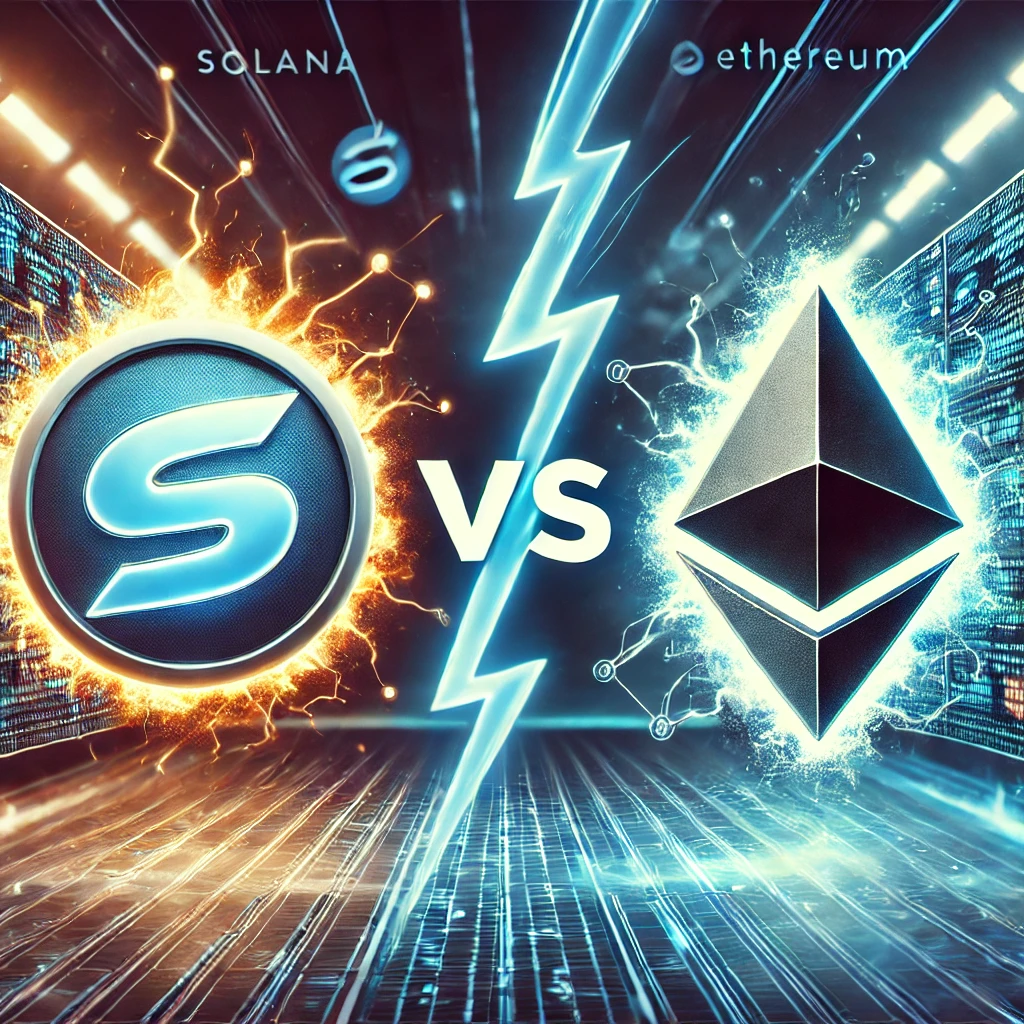
The blockchain space is witnessing an intense rivalry between two giants: Solana vs Ethereum. Both platforms have unique strengths and weaknesses, making the competition fierce and the outcome uncertain. As the battle for blockchain supremacy heats up, investors, developers, and enthusiasts are eager to know which platform will emerge victorious.
What is Solana?
Solana is a high-performance blockchain designed for scalability and speed. It boasts a unique consensus mechanism called Proof of History (PoH), which enables it to process thousands of transactions per second (TPS) at a fraction of the cost of other blockchains. Solana’s focus on speed and low fees has made it a popular choice for decentralized applications (dApps) and decentralized finance (DeFi) projects.
What is Ethereum?
Ethereum is the pioneer of smart contract platforms and remains the most widely used blockchain for dApps and DeFi. Known for its robust ecosystem and developer-friendly environment, Ethereum has recently transitioned to a Proof of Stake (PoS) consensus mechanism with its Ethereum 2.0 upgrade, aiming to improve scalability and reduce energy consumption.
Solana vs Ethereum: Key Comparisons
The Solana vs Ethereum debate revolves around several critical factors:
- Speed and Scalability:
- Solana: Capable of processing up to 65,000 TPS, Solana is significantly faster than Ethereum.
- Ethereum: Post-Ethereum 2.0, the network can handle around 100,000 TPS with layer-2 solutions, but its base layer remains slower than Solana.
- Transaction Costs:
- Solana: Offers extremely low transaction fees, often less than a cent.
- Ethereum: While Ethereum 2.0 has reduced fees, they are still higher compared to Solana, especially during network congestion.
- Ecosystem and Adoption:
- Ethereum: Boasts the largest ecosystem of dApps, DeFi projects, and NFTs, with a strong developer community.
- Solana: Rapidly growing ecosystem with increasing adoption, particularly in DeFi and gaming.
- Decentralization and Security:
- Ethereum: Known for its high level of decentralization and security, making it a trusted platform for critical applications.
- Solana: While fast and efficient, Solana has faced criticism for being more centralized due to its validator requirements.
Strengths and Weaknesses
- Solana:
- Strengths: Speed, low fees, and scalability.
- Weaknesses: Centralization concerns and occasional network outages.
- Ethereum:
- Strengths: Robust ecosystem, decentralization, and security.
- Weaknesses: Higher fees and slower transaction speeds compared to Solana.
Which Will Be the Victor?
The Solana vs Ethereum battle is far from over, and the victor may depend on specific use cases:
- For Developers: Ethereum’s established ecosystem and developer tools make it a safer choice for building complex dApps.
- For Users: Solana’s speed and low fees are attractive for high-frequency transactions and gaming applications.
Ultimately, both blockchains are likely to coexist, each excelling in different areas. The real winner may be the blockchain industry as a whole, as competition drives innovation and improvement.
What This Means for Investors
For investors, the Solana vs Ethereum rivalry presents opportunities to diversify portfolios and capitalize on the strengths of both platforms. Keeping an eye on developments in scalability, adoption, and ecosystem growth will be key to making informed decisions.
Conclusion
The Solana vs Ethereum competition is a fascinating tale of two blockchains with distinct advantages and challenges. While Ethereum remains the dominant force in terms of ecosystem and adoption, Solana’s speed and efficiency make it a formidable contender. Stay updated with the latest news and insights on this ongoing battle on ZamaExpress.
For more updates please visit https://zamaexpress.com.
